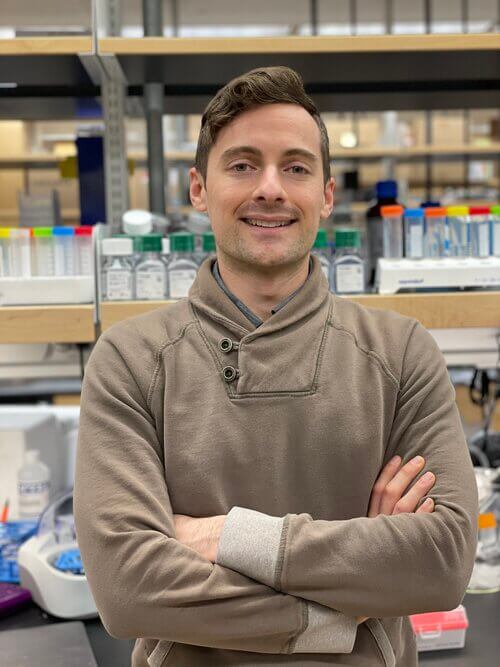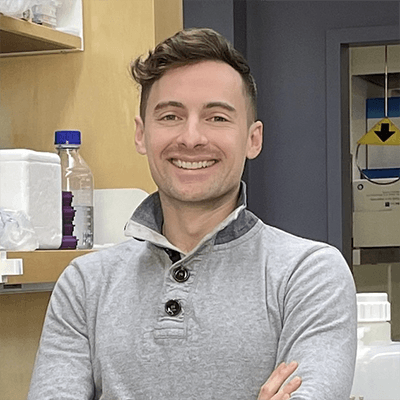
Can you give an overview of your research?
My lab studies RNA biology. We were the first to discover glycosylation – a common modification on proteins and lipids – on RNA. Since we were the first to make this observation, nothing else is known about it so we’re asking all the questions. How and why do cells do this? Can we make it synthetically? Could there be any therapeutic applications?
What’s the significance of this work?
GlycoRNAs are on the surface of cells where many regulatory activities occur. Our understanding of why cells place RNAs on their surface is poorly characterized, so if we can understand this deeply, it could be a new way to control features of the cell surface through RNA mechanisms. We imagine that defining the precise genetic pathways and functional activities of cell surface glycoRNAs will reveal fundamental aspects of how cells work. Our long-term goal is to learn how glycoRNAs change in human diseases and eventually control them for therapeutic benefit.
What drew you to this work?
I come from a family of doctors and had originally wanted to be a surgeon. I did a lot of research in college and grad school, and I found it interesting that you could have such a broad impact with research. I saw that my mom and my grandfather had very deep but very defined and constrained impacts since you can only see so many patients per day per year in your lifetime. I was intrigued by the idea that you could trade the certainty of treating hundreds or thousands of patients in your lifetime for potentially making an insight through a mechanism or a therapeutic that could be applicable to tens or hundreds of thousands or more people.
What are you most excited about these days?
In my own work? All of it (laughs). RNA biology is an extremely important and historical area of study. It’s received a lot more attention over the last couple of years because of the [COVID] vaccine but that’s only a small slice of it. I hope my lab’s work will identify a new place for studying RNA. I think it will (hopefully) reveal a very impactful insight that RNA is not constrained to the inside of the cell; that there’s RNA biology going on outside of the cell and it’s not random – it’s regulated, it’s purposeful, and it can be studied for the understanding of our own biology and then controlled for therapeutic purposes.
You recently received the 2023 Damon Runyon-Rachleff Innovation Award. How does it feel to receive this recognition?
The Damon Runyon Cancer Research Foundation, through the Rachleff Innovation Award, supports “high-risk, high-reward” ideas with the potential to significantly impact the prevention, diagnosis, or treatment of cancer and it’s an honor to be among this year’s recipients. With support from the Foundation, my lab aims to develop novel tools to study and eventually target the RNA molecules of the surface of acute myeloid leukemia (AML) cells. Funding through the Rachleff Innovation Award will deepen our basic understanding of cell surface glycoRNAs and enable us to accelerate these insights toward clinically useful tools.
You’ve been with HSCRB since January 2019 – what’s been your experience in the department?
I’ve really enjoyed being part of a scientific community that has such diverse biological interests. I have been working with people in various capacities to learn about their systems and models and eventually we’ll hopefully be studying glycoRNAs in a variety of these contexts. We hope that our insights into the activity of glycoRNAs in my peers’ labs’ models will also enable new insights into the biology of the tissues and systems they study. It’s exciting to have such opportunities within this community.
